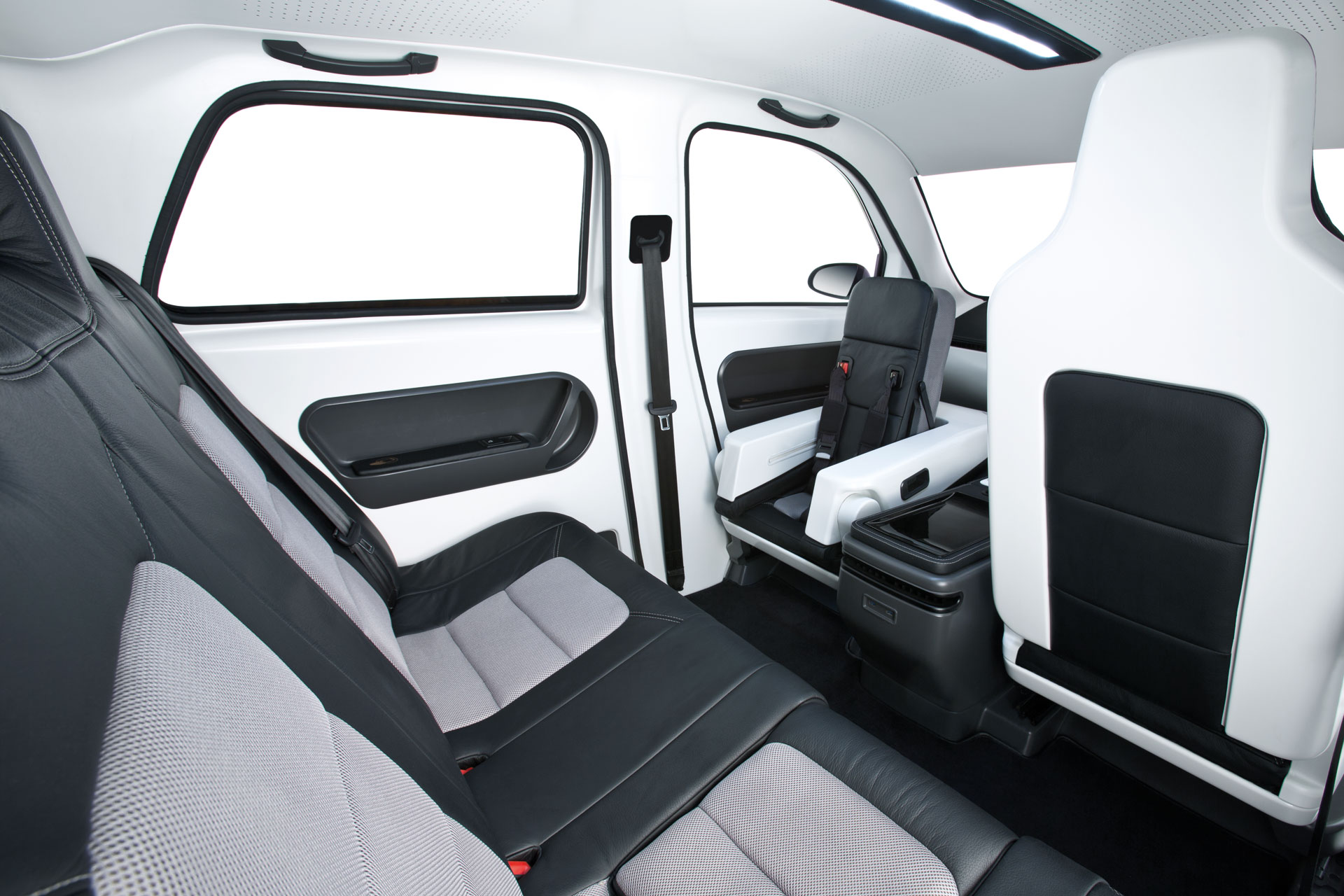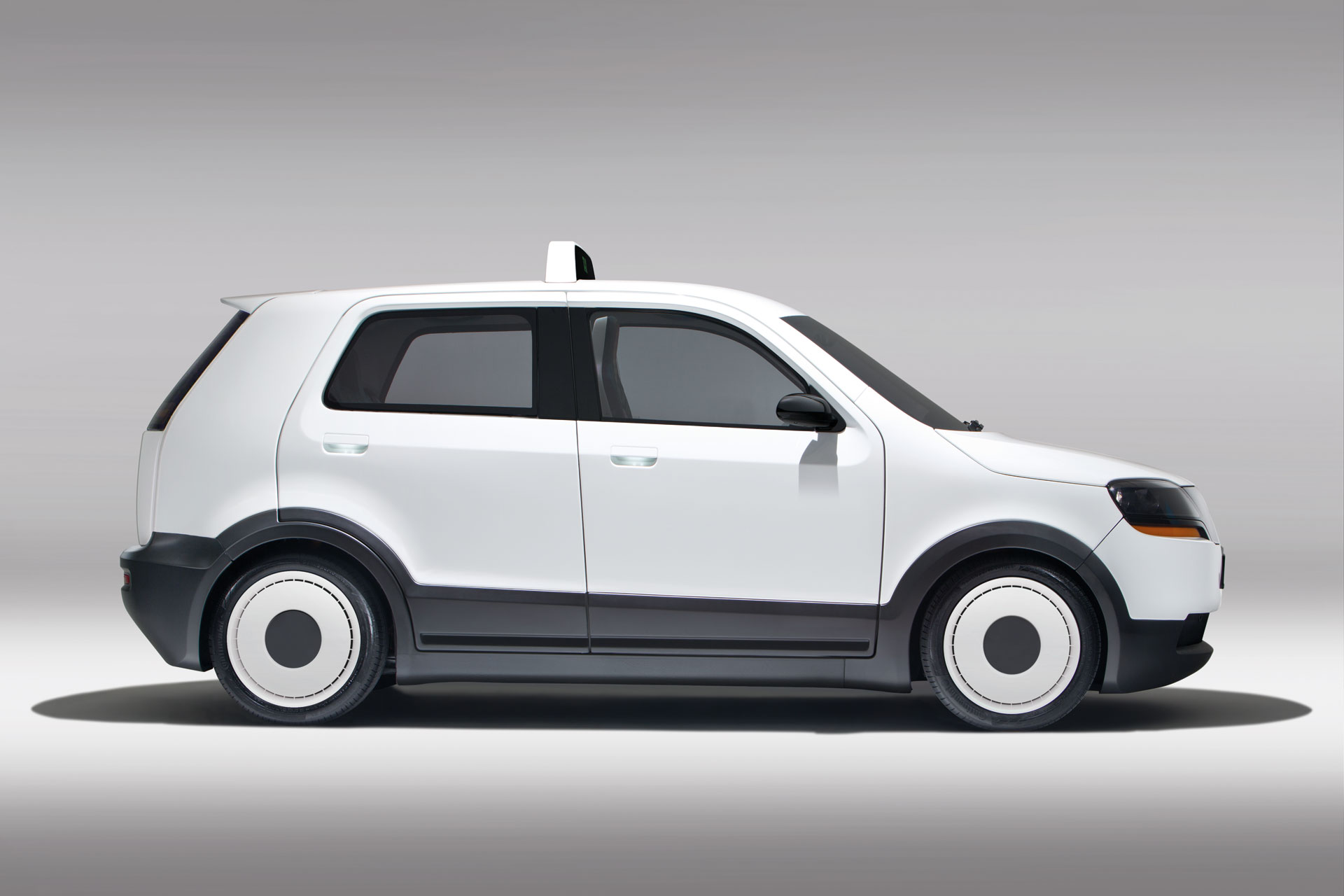- Features 15-minute super-fast charging as solution to EV range challenge
- Extensive use of energy- and weight-saving materials and technologies
- Infotainment system allows passengers to control climate and audio via mobile devices
TOKYO, JAPAN (21 November 2013) — TUM CREATE has unveiled its electric taxi prototype, codenamed EVA, at the 43rd Tokyo Motor Show today. It will be on display at Booth 8 in West Hall 4 of the Tokyo Big Sight from 22 November to 1 December 2013.
EVA serves as a platform to showcase the results of the innovations and developments at TUM CREATE, a joint research programme by Technische Universität München (TUM) and Nanyang Technological University (NTU).
A key highlight is the car’s super-fast charging system. It is designed to be recharged in just 15 minutes to cover a realistic range of 200 km (based on Singapore driving patterns), which will be an industry benchmark. Other features found on EVA include the extensive use of lightweight materials and energy-saving solutions such as individualized overhead air-conditioning.
Professor Dr. Wolfgang A. Herrmann, President of Technische Universität München, said, “This new electric taxi for tropical mega cities, developed and constructed by two leading universities, highlights the successful collaboration of TUM and NTU. The scientific and technological breakthroughs are based on a spirit of mutual trust and understanding. For more than ten years, Technische Universität München has been operating its branch TUM Asia in Singapore, which has a current enrolment of 380 students and produced hundreds alumni. It is a great joy for me to see that our untiring joint efforts, supported by the Professor Dr. Wolfgang A. Herrmann, President of Technische Universität München, have borne fruits now.”
Professor Bertil Andersson, NTU’s President, said the technological innovations developed for EVA is a great demonstration of how two of the world’s top engineering universities can successfully collaborate to combine their expertise and knowledge to solve the tough challenges of today.
“NTU’s deep expertise in energy technologies, such as battery systems, wireless charging, and materials science, in combination with TUM’s strengths in automotive and electromobility, gave our research team a strong platform in which to design and build EVA on,” Prof Andersson added.
“A robust and energy-efficient electric taxi for use in real world conditions is testimony of our strengths in engineering and how we apply it to make a difference. It is also a reminder to the world that it is essential for all of us to play a part for our environment and such R&D efforts is an investment towards a more sustainable future for everyone.”
Transportation companies around the world typically re-purpose passenger cars as taxis. However, the challenge of current electric vehicles is the extremely limited range and long recharge times (up to 8 hours), making them impractical as taxis. TUM CREATE aims to address these issues, as well as the unique challenges posed by the heat and humidity in tropical megacities, through its research and development. Unlike temperate climates, passenger cooling and battery pack heat management are issues specific to tropical and equatorial regions.
As a form of public transportation, introducing e-taxis into the local taxi fleets has a high leveraging effect to decrease carbon emissions.
“While taxis account for less than 3% of the vehicle population in Singapore, they contribute to 15% of the total distance travelled,” explains Principal Investigator Dr. Daniel Gleyzes. “The average two-shift taxi covers over 500 km a day.”
EVA was designed from the ground-up as an e-taxi and is a result of interdisciplinary research in the areas of energy storage, battery charging, thermal management, and lightweight materials and design.
TUM CREATE is funded by the Campus for Research Excellence And Technological Enterprise (CREATE) programme under the National Research Foundation (NRF), an agency of Singapore’s Prime Minister’s Office.
Professor Low Teck Seng, NRF’s Chief Executive Officer, said, “The launch of this prototype electric-vehicle today marks a major milestone for TUM CREATE. In the short time since TUM and NTU came together at CREATE in 2010 with support from the NRF, they have developed strong research and engineering capabilities in e-vehicular technology resulting in this demonstrator. With EVA, we have a public commuter car that is green, energy-efficient, and tailored for a tropical urban environment. We look forward to this partnership strengthening in the years to come.”
This project milestone marks the first time that a Singapore-based organization is participating and presenting a vehicle in the 59-year history of Asia’s most important automotive tradeshow.
EVA feature highlights:
- Super-fast charging;
- Individualized air-conditioning;
- Interactive infotainment system; and
- Integrated child-seats.
EVA’s super-fast charging system is designed to achieve a re-charge in just 15 minutes. This allows the car to be driven for 200 km with the air-conditioning switched on, based on the driving patterns of Singaporean taxis collected by TUM CREATE. With its fast recharge times, EVA can achieve long ranges with short downtimes — as charging can be performed during the driver’s rest breaks.
Apart from tackling the energy storage and battery charging challenges, EVA will also feature innovations that are particular to tropical climates. TUM CREATE’s researchers have developed an individualized, overhead air-conditioning system with which they target to reduce the cabin cooling power. Ergonomics studies have shown that localized cooling has a direct impact on the overall thermal comfort. The overhead outlets and the seat ventilation target these areas to create better thermal comfort without the need to cool down the whole cabin. Unoccupied zones can also be switched off to further reduce energy consumption. Interestingly, this system also reduces the exposure of air-borne particles or germs from being blown from one seat to another zone in the vehicle.
Besides the cabin cooling system, EVA’s innovative seats provide a maximum comfort for both the driver and passengers driving in humid tropical climate. The ergonomically designed seats are equipped with a purpose-built system where suction draws away moisture and heat from the surfaces of the seat. In addition, the front passenger seat folds forward to reveal an integrated child seat for children aged 9 months to 3 years old, which fills the void in the area of safety for young taxi passengers.
The climate controls, in-car entertainment, booking and digital payment systems are also linked via the infotainment system that allows passengers to control air-conditioning and audio settings wirelessly from their personal mobile devices. Similarly, the central control panel and driver’s instrument cluster are also connected seamlessly to the on-board systems, and are able to provide driving statistics and power-saving tips to the driver.





